Filipina women often see public displays of affection (PDA) through a complex mix of cultural beliefs and changing perspectives. While older generations may frown upon overt displays, younger women increasingly embrace them as natural expressions of love. Urban settings tend to be more accepting, allowing for gestures like hand-holding and light touching, while rural areas maintain traditional views. If you want to explore the nuances of attitudes toward PDA, you’re in for some interesting insights.
Key Takeaways
- Many Filipina women from younger generations view PDA as a natural expression of love, embracing it more openly than older generations.
- In urban areas, Filipina women are generally more accepting of moderate PDA, such as hand-holding and light touching.
- Cultural and religious influences often lead Filipina women to prefer subtle and discreet displays of affection in public settings.
- Rural Filipina women tend to uphold traditional views, discouraging visible PDA due to community expectations and respect for elders.
- Familial opinions significantly shape Filipina women’s attitudes towards PDA, often promoting modesty and restraint in public expressions of affection.
Cultural Context of PDA in the Philippines
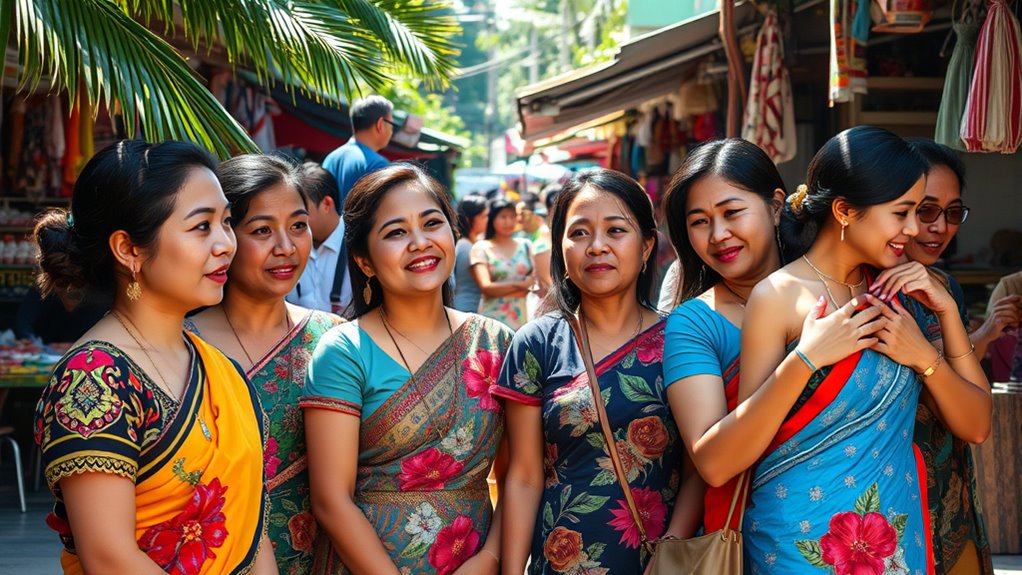
While you might think of public displays of affection (PDA) as a universal expression of love, the cultural context in the Philippines presents a different perspective.
In this mainly conservative society, modesty is highly valued, and overt PDA like hugging or kissing can be frowned upon, especially around family or elders. Filipinos often prefer subtle gestures, like linking arms, which align with cultural expectations of propriety and modesty.
The influence of the Catholic Church reinforces these norms, promoting modest behavior and discouraging physical contact outside marriage. Familial opinions also play a significant role, as couples are expected to reflect on their family’s perceptions to maintain social harmony. This cultural landscape shapes how affection is expressed in public, often with restraint.
Generational Perspectives on Affection
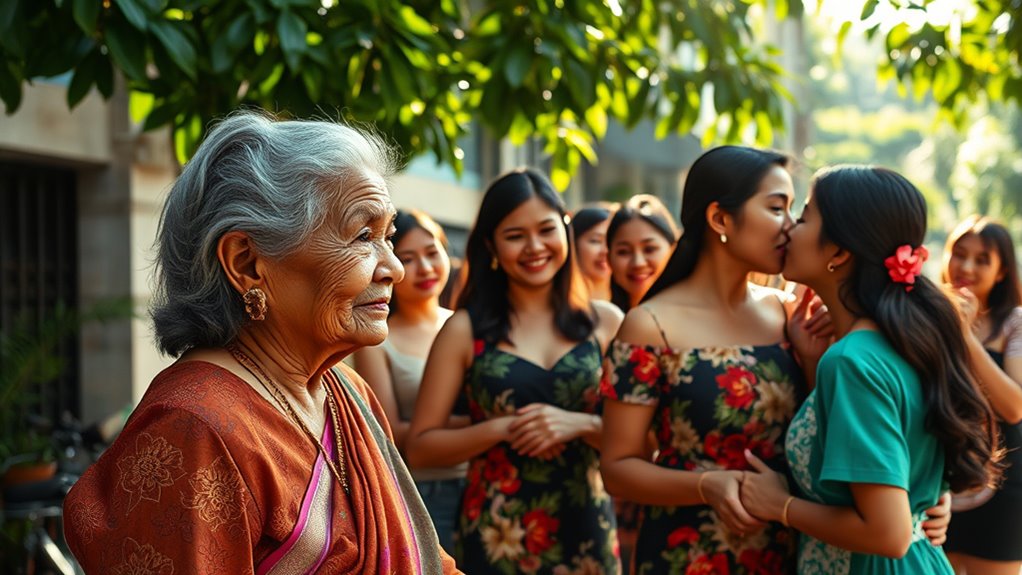
As generations evolve, so do perspectives on public displays of affection (PDA) in the Philippines.
Older generations often hold traditional views, considering PDA less appropriate due to societal norms and religious values.
In contrast, younger Filipinas, especially millennials, embrace PDA as a natural expression of love, influenced by their exposure to diverse relationships through social media.
You might notice that millennials are more accepting of all forms of affection, including same-sex displays.
This openness stems from increased awareness and the digital environment that fosters discussions on relationships.
Urban vs. Rural Attitudes Towards PDA

Public displays of affection (PDA) reveal a striking contrast between urban and rural attitudes in the Philippines.
In urban areas like Manila and Cebu, you’ll find a more accepting environment, where hand-holding and light affection are common and often welcomed. Younger individuals feel comfortable expressing their feelings in public spaces like malls or parks. This urban acceptance is often influenced by communication style that encourages openness and a relaxed approach to social interactions.
However, in rural settings, traditional values prevail. Here, community expectations and respect for elders discourage PDA, leading to a more conservative outlook. Limited public spaces further restrict opportunities for such expressions.
The Influence of Religion on PDA Norms

In a country where Catholicism deeply influences social norms, public displays of affection (PDA) often face scrutiny. You might notice that intimate gestures, like kissing, are generally frowned upon, especially near religious sites. This stems from a strong emphasis on modesty and respect, guided by both cultural expectations and legal frameworks that protect religious sentiments.
Family plays an essential role, as what’s acceptable in private may not be appropriate in public, particularly in front of relatives. To maintain a respectable image, many Filipinos avoid overt PDA, aligning with community values that prioritize social harmony.
Ultimately, religious beliefs greatly shape attitudes towards PDA, creating a cautious environment for expressing affection in public.
Acceptable Forms of Public Displays of Affection
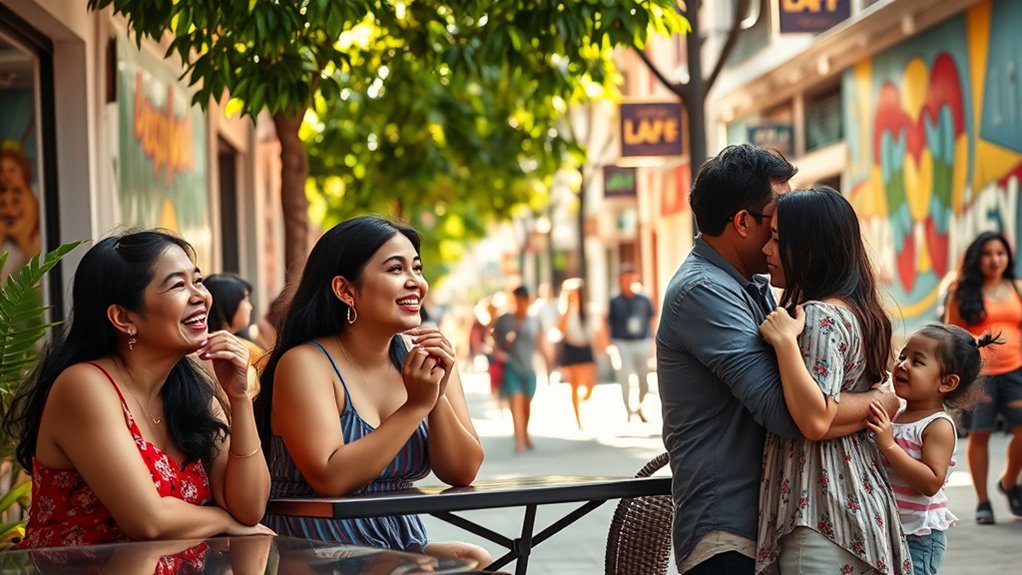
While religious beliefs considerably shape attitudes toward public displays of affection (PDA), there are still forms of affection that many Filipinos find acceptable. Hand-holding is commonly embraced, especially among couples. Light touching, like placing a hand on someone’s shoulder, is also seen as moderate and appropriate.
In urban areas like Manila, walking arm-in-arm and cheek kissing are more tolerated, while rural settings tend to adhere to conservative norms. Brief hugs might be acceptable in certain contexts, but excessive intimacy may attract disapproval.
Malls, parks, and cafes often serve as venues for PDA, yet discreet expressions are preferred to avoid drawing attention. Overall, cultural norms emphasize a balance between affection and modesty.
The Role of Family in Shaping Views on PDA
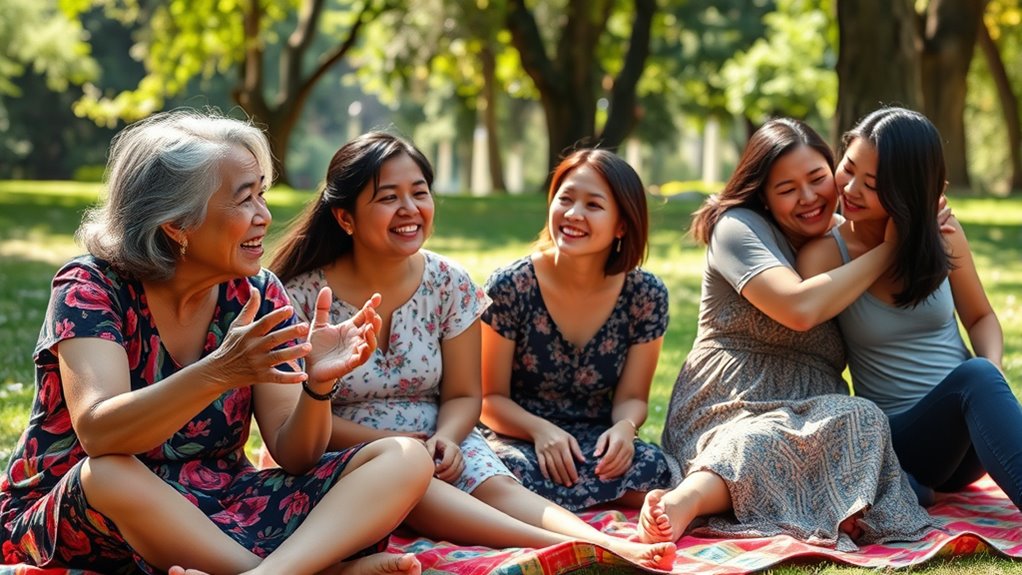
Although families play an essential role in shaping attitudes toward public displays of affection (PDA), their influence often reflects broader cultural norms and values.
In the Philippines, your family’s expectations might emphasize modesty, promoting subtle forms of affection instead of overt displays. The concept of *hiya* teaches you to avoid embarrassment, leading to a preference for low-profile interactions.
Additionally, the principle of *pakikisama* encourages behavior that maintains social harmony, often causing couples to tone down their affection in public.
Religious teachings, particularly from Catholicism, further reinforce these views, portraying PDA as disrespectful.
As you interact with older and younger family members, you may notice generational differences in attitudes, creating a dynamic environment for discussing PDA norms.
Romantic Gestures Beyond Public Displays
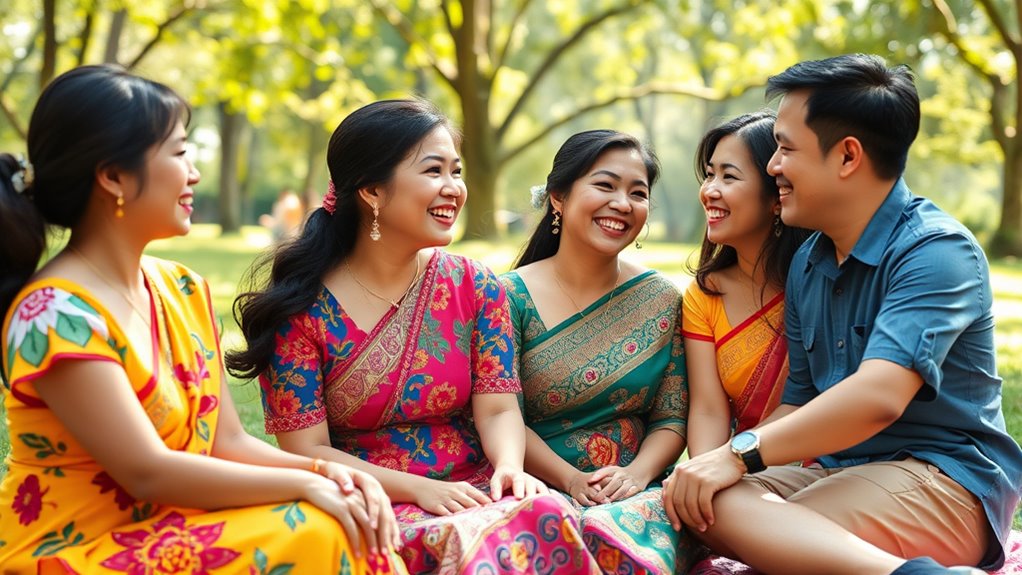
Romantic gestures extend far beyond public displays of affection, offering meaningful ways to express love and connection.
In Filipino culture, you might find charm in traditional practices like harana, where serenading becomes a heartfelt expression of your feelings. Engaging in ligawan, with thoughtful visits and small gifts, can deepen your bond.
Sharing meals through kamayan fosters intimacy, while pasalubong—thoughtful gifts—create shared memories that enhance your connection.
Additionally, participating in acts of kindness reflects bayanihan, showing commitment to each other. These gestures aren’t just romantic; they’re a celebration of cultural values that emphasize love, respect, and support.
Regional Variations in Acceptance of PDA

Steering through the landscape of public displays of affection (PDA) in the Philippines reveals significant regional variations that reflect the country’s diverse cultural influences.
In Northern Luzon, conservative attitudes dominate, making PDA less accepted. Meanwhile, Southern Luzon shows a mix, where urban areas tend to be more open than rural ones.
The Visayas region, known for its lively festivals, generally embraces PDA more freely. In contrast, Mindanao’s cultural diversity leads to a blend of traditional and modern views.
Islands with fewer tourists often enforce stricter norms. Your acceptance of PDA might depend on where you are, influenced by socioeconomic factors, community standards, and even the age group you belong to, showcasing the rich tapestry of Filipino culture.
Social Stigma and Personal Choices

While maneuvering through the complexities of public displays of affection (PDA), Filipina women often grapple with social stigma that shapes their personal choices.
Traditional gender roles and community perceptions heavily influence your comfort level with PDA. In urban areas, you might feel more freedom, while rural settings often impose stricter norms.
Family expectations and fear of judgment can make you hesitant to show affection in public, as concerns about reputation linger.
However, younger generations are increasingly embracing more open attitudes, influenced by cultural shifts and education.
Ultimately, you navigate these societal pressures, weighing your personal preferences against the expectations around you, aiming for a balance that respects both your autonomy and community values.
The Importance of Emotional Connection in Relationships

Emotional connection serves as the heartbeat of any meaningful relationship, shaping how partners interact and support one another. It thrives on vulnerability, allowing you to share your emotions without fear of judgment.
Authenticity plays a key role; being your true self fosters trust, while mutual compassion and support deepen emotional intimacy. When you feel emotionally safe, you’re more likely to express yourself openly, enhancing trust and security.
This connection not only strengthens your bond but also improves communication and conflict resolution. Yet, challenges like past experiences and external stressors can hinder this intimacy.
Frequently Asked Questions
How Do Filipina Women Feel About PDA in International Contexts?
In international contexts, you might find that Filipina women have mixed feelings about public displays of affection (PDA).
Some embrace the more liberal norms, feeling liberated and open to expressing love. Others may feel uncomfortable, clinging to their cultural upbringing that emphasizes modesty.
Your experiences and adaptability play vital roles in shaping your views, as exposure to diverse cultures can broaden your understanding of what’s acceptable in different social settings.
What Are the Most Common Misconceptions About PDA in the Philippines?
When it comes to public displays of affection (PDA) in the Philippines, misconceptions often swirl like autumn leaves in the wind.
Many think Filipinos shun all forms of affection publicly, but that’s not true. You’ll find that light gestures, like holding hands, are generally accepted.
Attitudes also vary regionally, and individual beliefs play a significant role. Understanding these nuances can help you navigate social interactions more comfortably and respectfully.
Are There Specific Occasions Where PDA Is More Acceptable?
Yes, there are specific occasions where PDA is more acceptable.
In urban settings like malls or parks, you’ll find holding hands or brief kisses more common. Events such as festivals can also create a relaxed atmosphere for affection.
However, during family gatherings or religious occasions, it’s best to keep things modest.
Younger generations often embrace more PDA in social circles, so context really matters when you’re expressing affection in public.
How Does Social Media Influence Perceptions of PDA Among Filipina Women?
Social media shapes your perceptions of public displays of affection (PDA) by exposing you to diverse cultural norms.
You see posts and videos that normalize PDA, challenging traditional views and encouraging a more liberal attitude. As you engage with influencers and discussions, you find yourself reassessing your comfort levels.
Through hashtags and shared experiences, social media creates a community where you can explore and express your feelings about PDA more openly.
What Advice Do Filipina Women Give to Foreigners About PDA Norms?
When it comes to PDA norms, Filipina women might say you should tread lightly—like walking on a tightrope over a pit of fire!
They often recommend observing local customs first. In conservative settings, keep affection minimal, while in more liberal areas, light hand-holding may pass.
Always respect family values and be mindful of your surroundings. Open communication with your partner about expectations can help you navigate these cultural waters smoothly.
Conclusion
As you stroll through a bustling Manila street, you might catch a glimpse of a couple holding hands, a subtle yet powerful expression of their affection. In the Philippines, public displays of affection can spark mixed reactions, reflecting cultural traditions and personal beliefs. Whether it’s a quick peck or a warm embrace, what truly matters is the emotional connection behind those gestures. So, as you navigate these nuances, remember that love knows no boundaries, even in the public eye.









